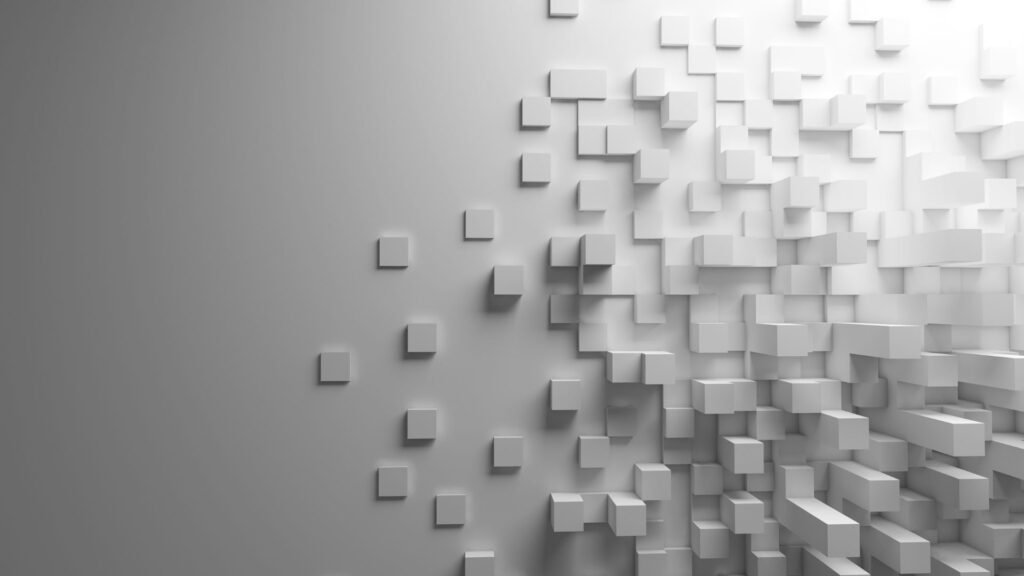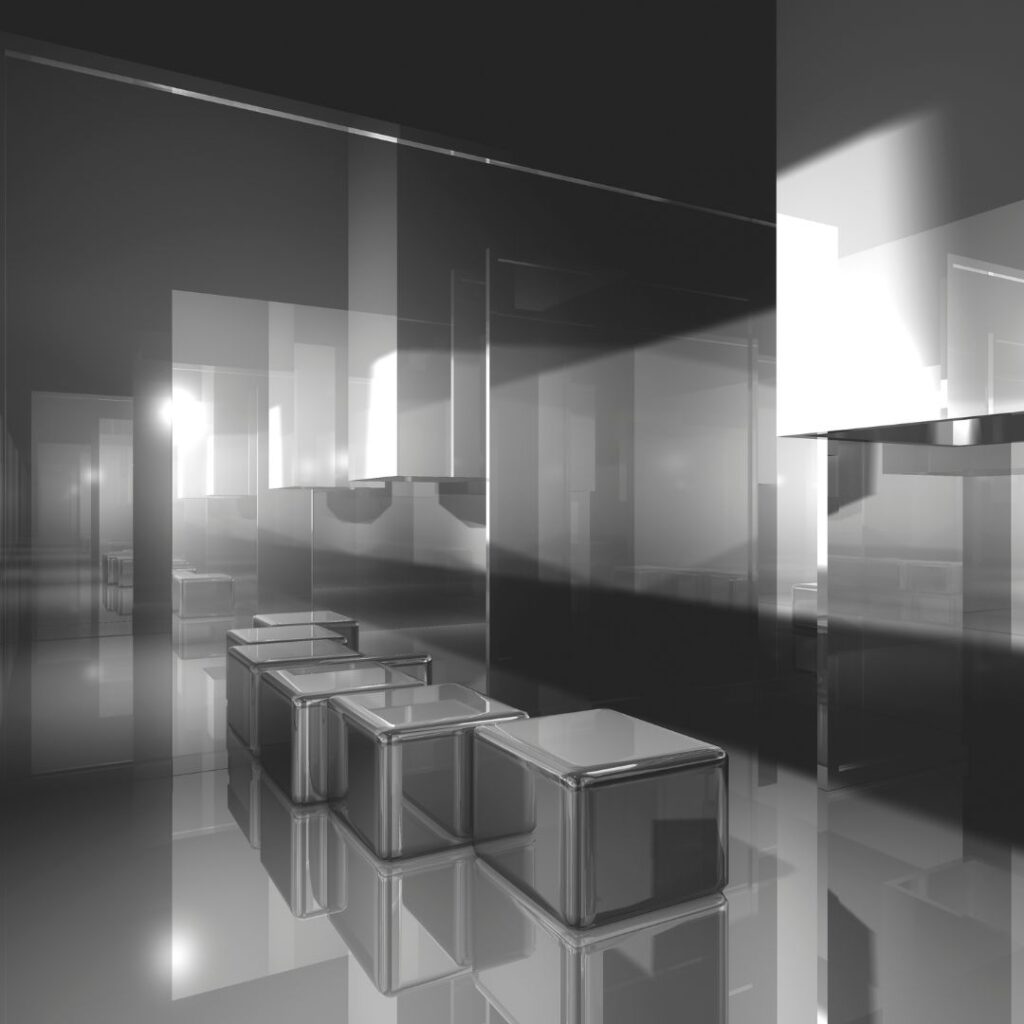Transitioning from 2D to 3D visualization design marks a significant shift in our perception and interaction with visual elements. The emergence of 3D technology has ushered in a new dimension – depth – fundamentally altering the creative process. This evolution represents a paradigm shift for creativity, transcending the constraints of conventional design and ushering in a realm brimming with innovative opportunities. Consequently, experiences become more dynamic and immersive, propelling us into a world where imagination knows no bounds.
2D and 3D visualization: what’s the difference?
The transition from 2D to 3D visualization marks a substantial departure in how we perceive and interact with visual content. In the realm of 2D visualization, images are depicted on a flat surface, with dimensions limited to width and height. This traditional approach has long been the standard for various forms of media, including paintings, photographs, and graphic design.
In contrast, 3D visualization introduces an additional dimension: depth. This means that objects in a 3D space can be represented with width, height, and depth, providing a more immersive and realistic experience.
One significant difference between 2D and 3D visualization lies in their capabilities to convey spatial relationships. In 2D visualization, the depth of objects is implied through techniques such as perspective and shading. However, these methods can only simulate depth to a certain extent. On the other hand, 3D visualization allows for the accurate representation of spatial relationships, enabling viewers to perceive objects in relation to one another within a three-dimensional space.
Moreover, 3D visualization opens up opportunities for interactive experiences. With advancements in technology, users can navigate and manipulate 3D models in real-time, providing a more engaging and dynamic experience compared to static 2D images.

Another key difference is the level of realism achievable with 3D visualization. While 2D images can be highly detailed and lifelike, they are inherently limited by their flat nature. In contrast, 3D visualization offers the potential for photorealistic rendering, allowing for the creation of scenes and objects that closely resemble their real-world counterparts.
Overall, the transition from 2D to 3D visualization represents a significant evolution in how we perceive and interact with visual content, offering greater depth, realism, and interactivity.
A multi-industry shift
Overall, the shift from 2D to 3D visualization is driven by the desire for more immersive experiences, enhanced realism, and greater versatility across various industries and applications. As technology continues to advance, we can expect 3D to become increasingly ubiquitous, further replacing 2D in many aspects of our lives. Here’s how 3D is replacing 2D in different fields:
- Entertainment and Media: In the realm of movies, television, and gaming, 3D graphics are becoming increasingly prevalent. Many animated movies and video games now utilize 3D animation and rendering techniques to create lifelike characters and environments, surpassing the limitations of traditional 2D animation. Additionally, virtual reality (VR) and augmented reality (AR) technologies rely heavily on 3D visualization to provide immersive experiences that go beyond what is achievable with 2D media.
- Architecture and Design: Architects and designers are embracing 3D visualization tools to create more realistic and interactive representations of their projects. 3D modeling software allows professionals to visualize buildings, interiors, and landscapes in three dimensions, enabling clients to better understand the final outcome and make more informed decisions. This approach is gradually replacing traditional 2D blueprints and renderings.
- Product Design and Manufacturing: In product design and manufacturing, 3D modeling and printing technologies are revolutionizing the prototyping and production processes. Designers can create detailed 3D models of products, iterate on designs more efficiently, and even produce physical prototypes using 3D printing technology. This shift from 2D sketches and drawings to 3D models streamlines the design process and reduces time-to-market for new products.
- Education and Training: 3D visualization is increasingly being integrated into educational curricula to enhance learning experiences. Subjects such as biology, geography, and history can be taught more effectively using interactive 3D models that allow students to explore and manipulate virtual objects and environments. This interactive approach surpasses the static nature of traditional 2D textbooks and diagrams.
- Marketing and Advertising: Marketers and advertisers are leveraging 3D visualization to create more compelling and engaging content. From product visualizations and architectural renderings to interactive advertisements and virtual showrooms, 3D graphics are proving to be more attention-grabbing and memorable than traditional 2D images and videos.
Making the best of 3D technology
Making the best of 3D involves leveraging its unique capabilities to enhance creativity, productivity, and user experience. Here are several strategies to maximize the potential of 3D technology:
- Understanding the Technology: Begin by familiarizing yourself with the tools and software available for 3D design and visualization. This includes mastering software like Blender, Maya, or SketchUp, which are commonly used for creating 3D models.
- Embrace Creativity: Think outside the box and explore the creative possibilities offered by 3D. Experiment with different techniques, styles, and concepts to push the boundaries of traditional design.
- Learn from Resources: Take advantage of online tutorials, courses, and communities dedicated to 3D design. Learning from experts and peers can help you acquire new skills and stay updated on the latest trends and techniques in the field.
- Collaborate and Network: Engage with other professionals in the industry to exchange ideas, collaborate on projects, and gain insights into best practices. Networking can also lead to new opportunities and partnerships.


- Optimize Workflows: Streamline your workflow by integrating 3D technology into your existing processes. This may involve automating repetitive tasks, using plugins and scripts to enhance efficiency, and adopting industry-standard practices for file management and collaboration.
- Focus on Realism and Detail: Pay attention to details such as lighting, textures, and materials to create more realistic and immersive 3D scenes. Experiment with different rendering techniques to achieve the desired visual effects.
- Explore Virtual and Augmented Reality: Take advantage of emerging technologies such as virtual reality (VR) and augmented reality (AR) to create interactive and immersive experiences. These platforms offer new ways to engage with 3D content and can be particularly impactful in fields such as architecture, gaming, and education.
Conclusion
To harness the full power of 3D technology and maximize its impact in your projects and endeavors, it’s essential to adopt a multifaceted approach. Firstly, embracing creativity is paramount. Allow your imagination to flourish and explore innovative ways to utilize 3D tools and techniques. Experiment with unconventional ideas, push the boundaries of traditional design, and dare to think outside the box. Creativity serves as the driving force behind transformative and groundbreaking creations in the realm of 3D.
Furthermore, commit yourself to continuous learning and skill development. The field of 3D technology is constantly evolving, with new software, techniques, and methodologies emerging regularly. Stay proactive in honing your skills through practice, tutorials, workshops, and online courses. Embrace opportunities for growth and never stop expanding your knowledge base. By staying adaptable and receptive to learning, you can stay ahead of the curve and remain proficient in the ever-changing landscape of 3D design.
In summary, to make the best of 3D technology, it’s essential to cultivate creativity, pursue continuous learning and skill development, and stay informed about technological advancements. By embracing these principles, you can unleash the full potential of 3D technology and create impactful, visually stunning projects that captivate and inspire audiences.
